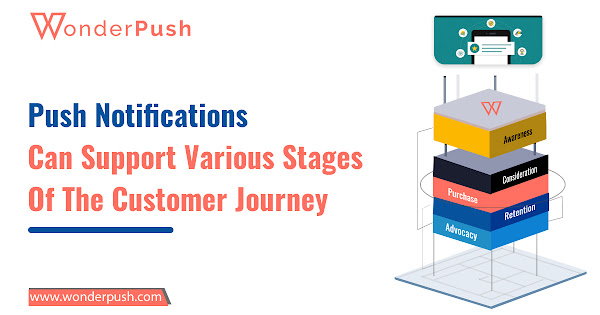What Features Of Push Notifications Are Developed For Mobile Apps?
Push notifications have the potential to increase engagement and client retention when used appropriately. However, widespread abuse and excessive use of push notifications might overwhelm consumers, prompting them to unsubscribe from your app or, worse yet, remove the mobile application from their device.
For instance, if you wish to leverage the power of flutter push notifications in mobile apps, then you must understand what push notifications are, how they work, the importance of push notifications for mobile apps, and important features to have for mobile apps.
So, without further ado, let’s get started and explore flutter push notifications.
Push Notifications- An Introduction!
Push notifications are not a new concept. If you scroll down the internet, you may find lots of definitions for the same. Some claim that it is a message that encourages app users to act. Others, however, assert that it is a comprehensive message sent to app users to provide updates, promotions, and data. Push notifications are sometimes referred to as tailored alert messages sent to app users in the same way that SMS texts are.
Apple Inc. unveiled push notifications in June 2009. App developers use this technology to send messages and alerts about updates, offers, events, reminders, and other pertinent information that demands the users' attention for their apps or products.
A push notification, whether the app is running or not, is essentially a brief pop-up message sent directly to the user's mobile device. Push notifications may include action buttons, rich media such as symbols, GIFs, images, and videos, as well as all text copy.
How Does Push Notification Work?
Users of the app receive clickable messages from push notifications that inform or alert them of anything fascinating and crucial pertaining to the app. A pop-up notice in the status bar or a text message delivered to the user's devices is both examples of push notifications. The users will be directed to the mobile app after tapping the notification message.
Users must first download the app to their mobile devices in order for the mobile app developer to send push notifications. However, users are not required to launch or open the app in order to receive push notifications. They are also under no obligation to follow the instructions contained in the alert messages or to take any action.
Push notifications to come in two primary varieties: web push notifications and mobile push notifications, both of which are rather flexible. Let's talk about flutter push notifications features developed for mobile apps in the following section.
3 Push Notifications Features Developed for Mobile Apps
With the push notifications technology advancement, these are the 3 key features you should check before choosing it for mobile apps.
Freemium Segment
When and if your app gains traction, you must pay for the freemium portion. This offers a practical, risk-free way to guarantee that you'll only have to pay when your app, hopefully, starts to earn income. For proof-of-concept projects, small clients on a budget, experimental projects, and projects with a short lifespan, this is highly sought.
Administrator Board
The major feature is to have an admin dashboard with the appropriate features for the client if the objective is to deliver marketing messages to users. Usually, what matters most is that it meets the requirements of the marketing team.
Look for an interface to let them create their notice and host any content they want to provide, a segmentation system to let them send only certain alerts to users who are relevant to them, and often a campaign system to let them control when the notifications are sent.
Programmatically Triggered
We want those push notifications to be programmatically triggered by the backend when the user experience of the app needs that they are sent under particular circumstances. The first step in looking for a backend integration-friendly solution would be to see if the present stack currently has a push notification solution.
For instance, Google's lightweight backend framework for websites and mobile apps, Firebase, smoothly connects with the company's Google Cloud Messaging, and Firebase can programmatically trigger push notifications using cloud functions.
The Bottom Line
Push notifications are a powerful marketing tool, a successful way to reach consumers, and a way to increase app usage. Push alerts, however, are often found to be grating and even aggravating by consumers. It would therefore be best to utilize it carefully to prevent abuse.
Moreover, you must check important features that you should not avoid before using flutter push notifications in mobile apps. For example, WonderPush can be the best bet to get the most out of push notifications.
.png)
.png)

.png)
Comments
Post a Comment